Designer Furniture Part 2: Springs, Cushions, and Fabrics
In part one of my post about designer furniture, I began addressing the basics of construction, frame, and joinery. Let’s continue to talk about some of those high-quality materials that distinguish luxury seating from mass-produced pieces.
Springs
The springs and cushions in furniture are what make them comfortable as well as durable. How will sofas, sectionals, armchairs, benches, and ottomans withstand rigorous moving and shifting over time? The answer is: quality springs and cushions! Think of them as your furniture’s support and suspension system.
Eight-way hand-tied springs are the hallmark of a classic, well-made piece of furniture, giving it a nice, deep spring and that “bounce-back” homeowners like. It’s the oldest and best method for supporting upholstered seating … the industry’s “gold standard.” It’s also the most labor-intensive to make. Craftspeople tie every coil spring underneath the seat by hand in eight different places, making it the sturdiest suspension system offered.
When constructed well and with heavy-gauge steel, sinuous springs also offer solid support. They are a popular choice of mid-market furniture manufacturers today. Remove your seat cushion. Do you see or feel a continuous S-shaped metal coil underneath that looks like a snake? That’s a sinuous spring system. When buying furniture, ask about the number of springs installed, how closely together their spacing is (1.5” - 2” apart is a good sign), and the gauge of the wire. Furniture that “sags” is a telltale sign of insufficient sinuous springs and lower-quality steel coils.
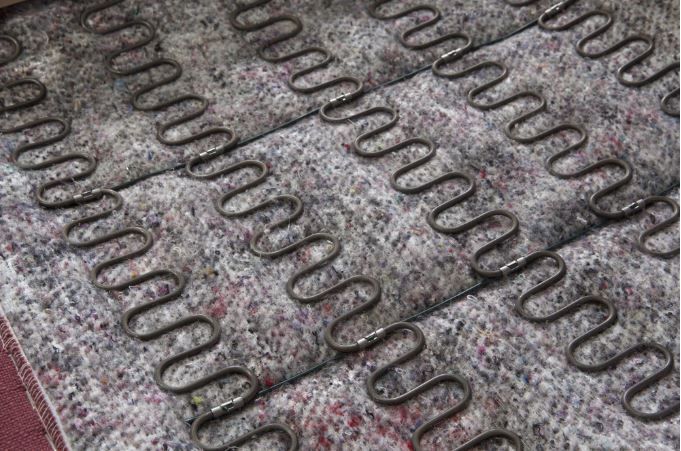
Example of sinuous springs, courtesy of Wellington’s Fine Leather Furniture of Johns Island, SC.
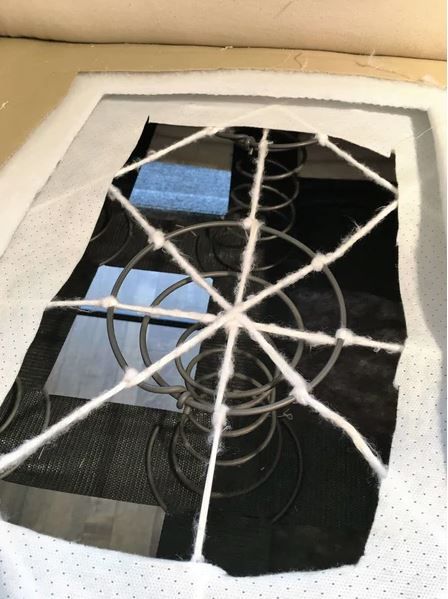
Example of an 8-way hand-tied spring sofa, courtesy of HomePlex Furniture of Indianapolis, IN
Cushions
Spoiler alert: cushions will be the first item to break down on your upholstered sofa or chair. Why? Any type of foam within cushions will degrade over time. The goal is to keep your cushions looking and feeling great for as long as possible. So what type of cushions are the best and last the longest? Glad you asked!
You will usually have four types of choices when it comes to cushions:
Conventional Foam
- Blend Down
- Spring Down
- Full Down
CONVENTIONAL FOAM
Conventional foam cushions are the ideal pick for homeowners who want a clean, crisp look to their sofas and chairs. They are also the best option for people with back pain because they are firm, offer good support, and retain their form after being compressed. The cushion density refers to the weight per square foot of foam core, which is the solid block of foam in the center of your cushion. High-density foam is less likely to break down. Though lightweight, it absorbs impact well. Ask your designer or showroom representative about the quality of foam used in the furniture they sell. Less expensive foam will lose its shape more quickly over time.
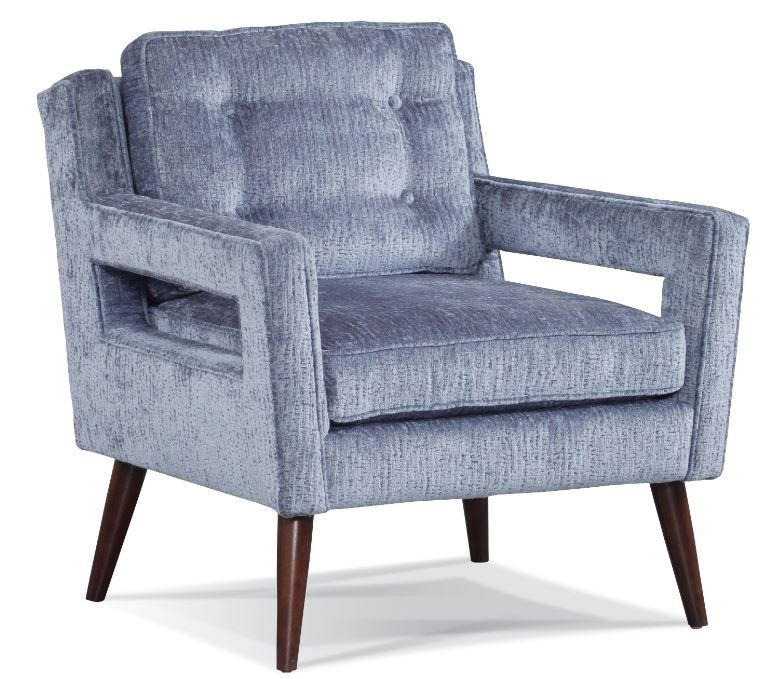
The striking handmade “Florence Chair” by Precedent Furniture of Newton, NC, features a biodegradable, high-density foam cushion with heavy-gauge sinuous steel springs
BLEND DOWN
Want something less crisp and a bit softer, but will still maintain its resiliency? Then choose blend down cushions. The most luxurious of cushions, blend down features high-density foam core wrapped in a well-balanced combination of feathers (firmness and structure) and down (softness and malleability). The blend is then surrounded by batting to create a barrier between the stuffing and upholstery. This is the most popular choice for today’s homeowners. You will be happy and comfortable with this option as it usually lasts well beyond 10 years!
(In case you’re curious, a blend of feathers and down is the most sought-after choice for sleeping pillows, too, because they don’t bunch up or form clumps.)
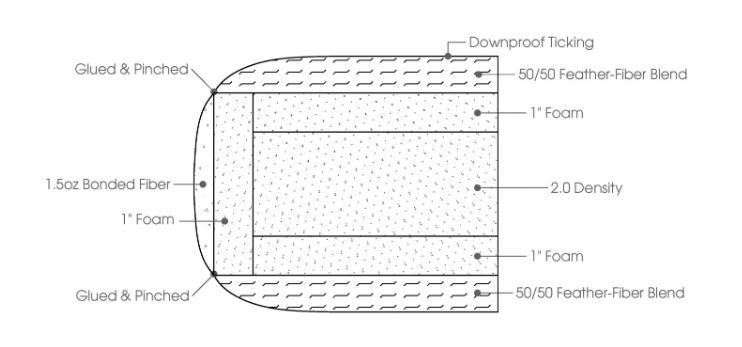
Example of a blend down cushion, courtesy of HF Custom of Bedford, VA.
SPRING DOWN
Spring down cushions also have that “just right” feeling when it comes to comfort level. They typically last more than 15 years with excellent resiliency. These types of cushions feature a foam border that surrounds an inner core of individual, fabric-wrapped coil springs that you typically find in a good mattress. A combination of down, feathers and polyester fiber batting is used to provide a little more comfort. A down-proof cover or “jacket” wraps everything so the feathers don’t poke through. The high-resiliency foam border helps keep the cushions puffed up, and returns them to their original shape.
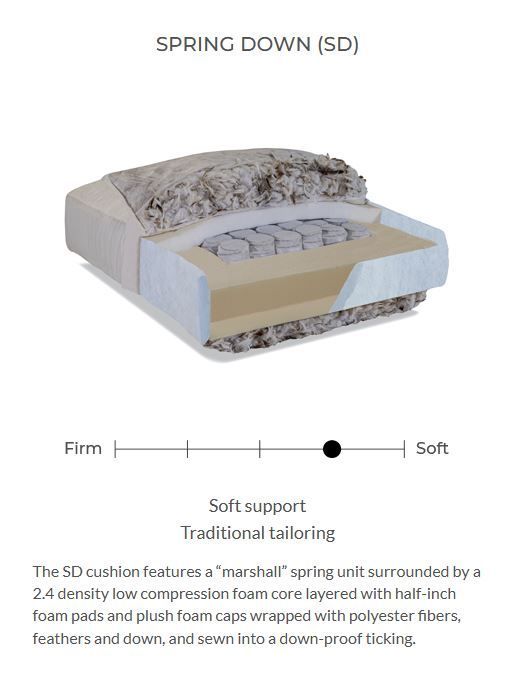
Example of a spring down cushion, courtesy of Hickory Home Furniture of North Carolina.
FULL DOWN
Full down is the priciest of cushion offerings because down is the most expensive filling. You can expect them to last longer than a decade. With down cushions, you have the feeling of
sinking into the sofa versus sitting
on it. These light and airy fibers are soft and settle over time. Because they do not contain foam and don’t readily return to their form, they have a more relaxed, casual appearance. They require extra maintenance. They must be fluffed daily to prevent divots and to prevent the cushions from losing support. This is an option only if you are willing to perform the daily upkeep!
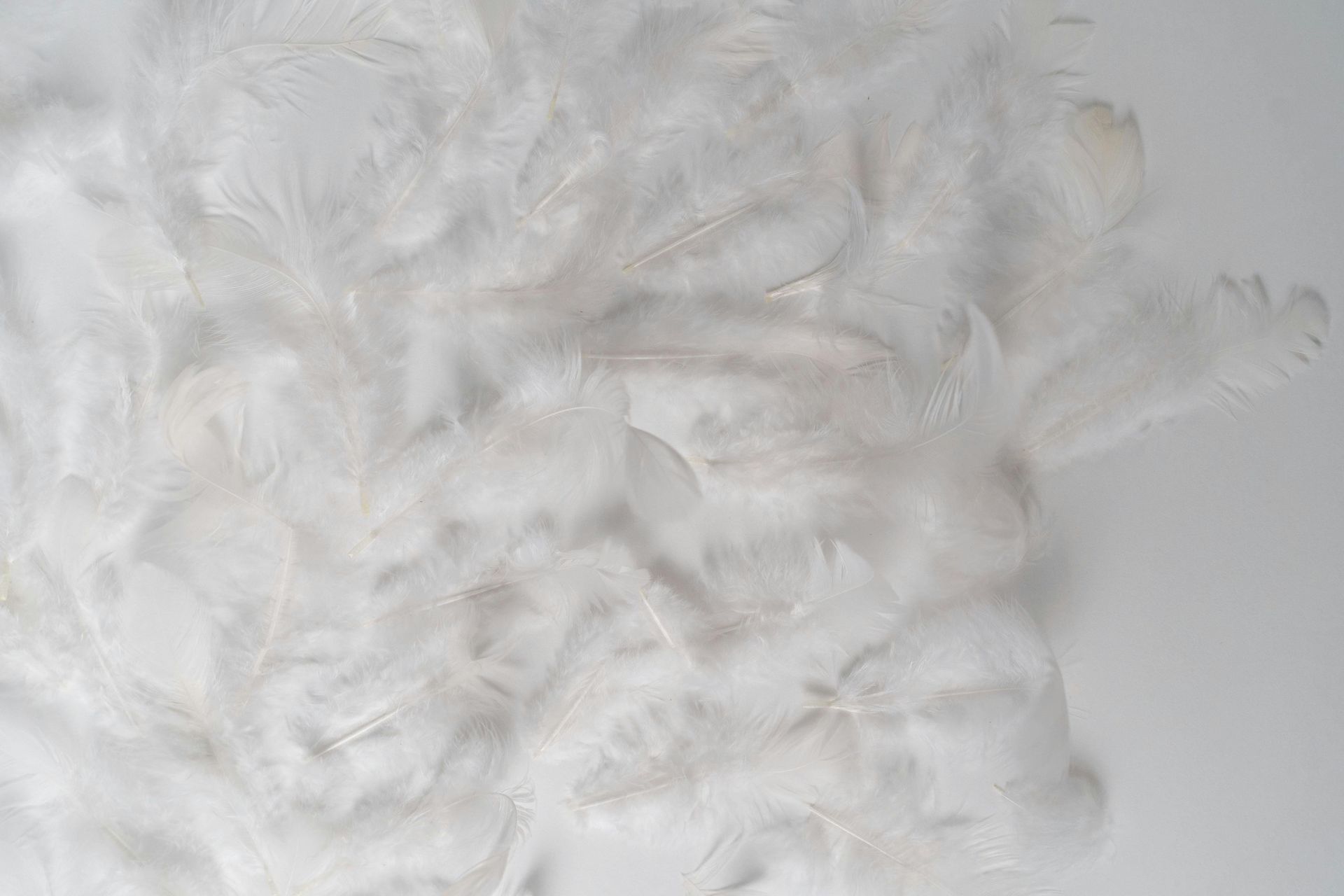
Fabrics: Rub Count and Weave
And now the final touch (literally) – the fabric! You will have countless choices for upholstery fabric when designing a custom piece of furniture. The type of material (natural or synthetic) is not as important as the quality of it and how it’s woven. If a particular chair, sofa or ottoman is going to endure repeated daily use, make sure you select a fabric that’s durable. In addition, any furniture for the sunroom must be fade-resistant so they don’t lose their color vibrancy from UV exposure.
RUB COUNT
This is the single most important metric when it comes to durability. Look at the back of fabric swatches and choose fabrics that have a double rub count of 20,000 or higher. This number represents how many times a fabric is rubbed before showing any signs of wear and tear. If you have younger children, pets and frequent house guests, look at heavy-duty fabrics with a double rub count of 20,000 - 50,000. Medium-duty fabrics (9,000 - 15,000 double rubs) are completely acceptable for those areas of the home that aren’t used regularly, perhaps your living room or dining room furniture.
WEAVE
Seating in high-traffic areas of the home should always have a tightly woven fabric; the tighter the weave, the stronger it is. Tightly woven performance fabrics that have been properly treated are also more resistant to stains and damage from youngsters and pets. Weave options include:
Tweeds: Typically made of sturdy wool yarn (usually sheep) or wool combined with other fibers; often has a multi-tonal or “flecked” appearance because it’s created with various-colored yarns.
Cottons or a cotton blend: Versatile and affordable with superior wear resistance, breathability, and moisture-wicking properties.
Twills: A diagonal weave pattern that gives fabric a distinctive and durable texture; the twill fabric structure is resistant to wear and tear.
Bull Denim / Cotton Twill Fabric: A type of twill, bull denim is made of 100 percent cotton fibers and takes dyes well; it is machine-washable.
Linen and Hemp: Extremely robust, long plant fibers spun into yarn with excellent breathability. Linen and hemp fabrics are naturally antibacterial and hypoallergenic. Linen is about 30% stronger than cotton, and hemp fabric is eight times stronger than linen.
Jacquards: Also known as brocades and damasks, Jacquards are a type of fabric woven on a Jacquard loom, named after its French inventor. The textured and raised fabrics have a tone-on-tone effect because they are interwoven with intricate patterns.

The “Didier Stripe” in Ivorie by Fabricut is a linen-cotton blend fabric with 24,000+ double rubs.
Finally, a side note about leather if going that route. Though more expensive, choose a “top-grain leather” and treat it regularly; it will last a lifetime. Top-grain leather is made from the top layer of the hide; all imperfections are removed and it has a more consistent, softer, and smoother appearance. On the other hand, “genuine leather” is less expensive because it is a lower-quality leather with a less pliable feel and inconsistent appearance.
If you’re thinking of refreshing your space with new designer furniture, ask these important questions before you begin the process, and test out seating to determine your personal preference! In the Willowbrook, IL area? Feel free to
reach out to discuss designer furniture options with me.
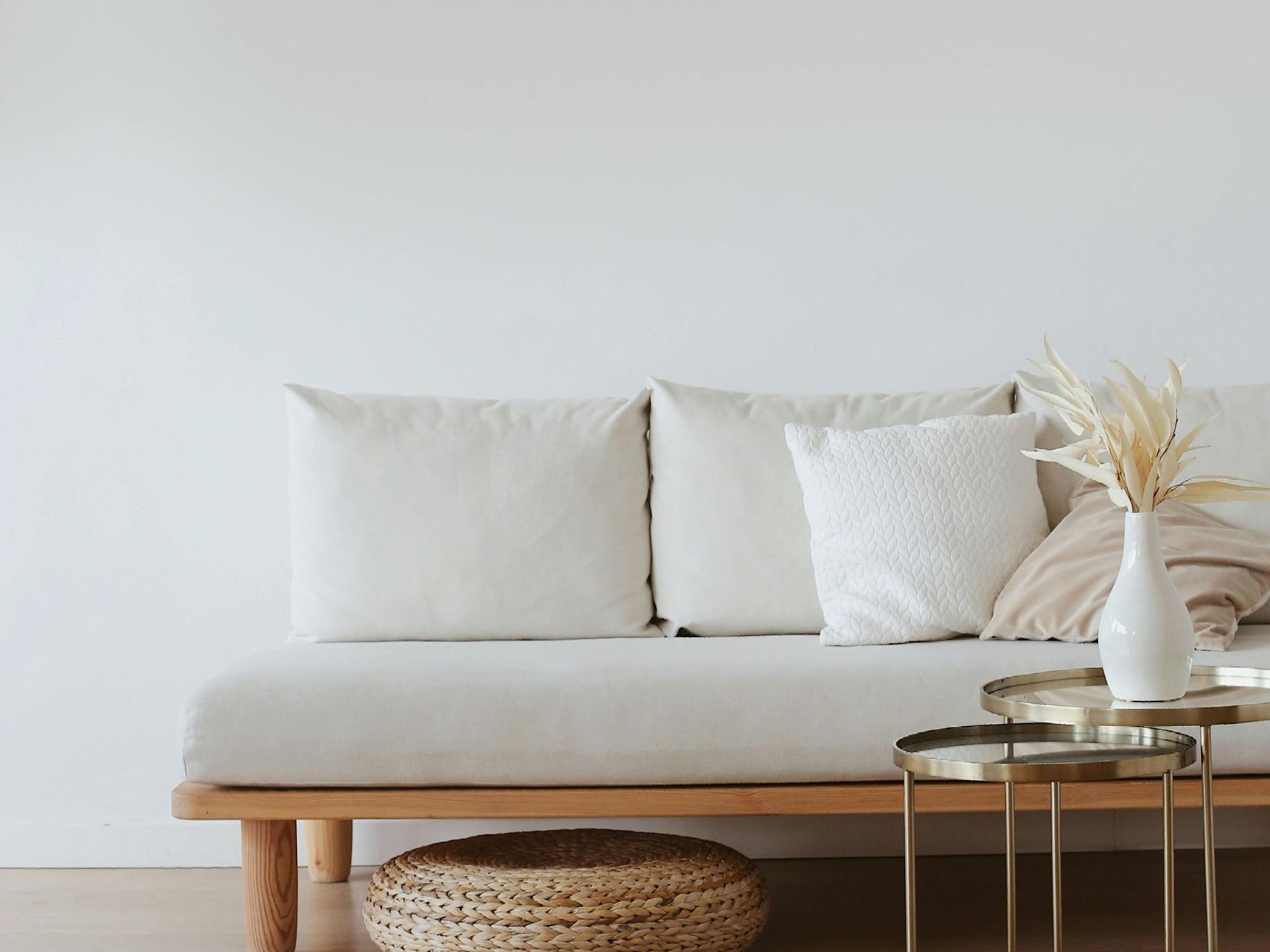
Edit Interiors | All Rights Reserved | Website designed by Artisan Launchpad
